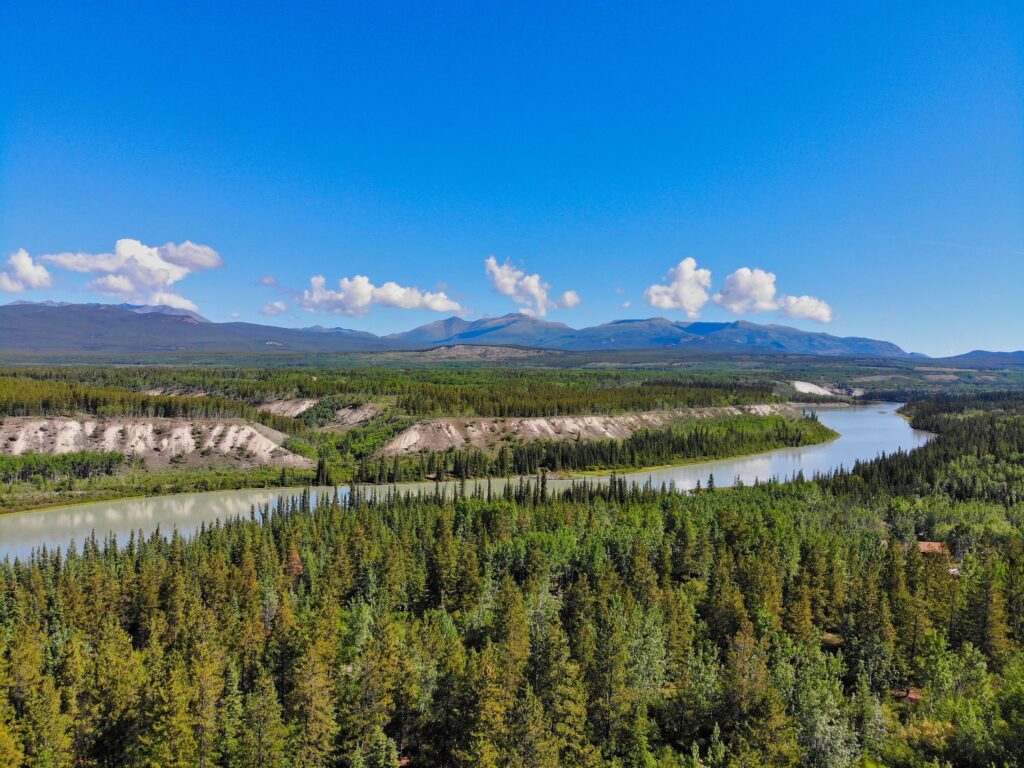Kilo Hot Springs: A Guide to Ray Mountains, Alaska’s Hidden Gem
Discover a hidden gem nestled deep in the Alaskan wilderness – Kilo Hot Springs. This natural wonder is a true testament to the beauty of the great outdoors. You won’t find any towering skyscrapers or bustling city streets here – just the serene sounds of nature and the soothing warmth of the springs.
Despite its unassuming appearance, Kilo Hot Springs has a rich history that dates back centuries. For generations, locals have sought out this secluded oasis as a place of healing and relaxation. Today, visitors can still experience the same rejuvenating benefits that have been enjoyed for centuries.
But how do you get there? It’s not as easy as punching an address into your GPS. In fact, if you’re not careful, you might drive right past it without even realizing it. But don’t worry – we’ve got you covered. In this article, we’ll give you all the information you need to discover Kilo Hot Springs for yourself. From seasonality to accessibility, we’ll cover it all. So pack your bags, lace up your hiking boots, and get ready to explore one of Alaska’s best-kept secrets.

Overview
Kilo Hot Springs is a natural hot springs located in the Koyukuk River Valley in the Alaska Interior. It is located along the Alaska Highway, about 16 miles northeast of Chicken, Alaska and 10 miles south of the Yukon border. Kilo Hot Springs is both a geological and cultural phenomenon.

Geologically speaking, a natural hot springs is formed when a stream of groundwater comes into contact with a source of geothermal heat, creating a warm and highly mineralized pool of water.
Culturally, Kilo Hot Springs is a meeting place for Alaska Natives and Outsiders. It has been a source of relaxation, healing, and community for Alaska Natives for thousands of years. Kilo Hot Springs is one of about 85 geothermal springs in Alaska.
Most of these springs are located in the central region of Alaska and the northeastern Arctic. Kilo Hot Springs is the oldest documented geothermal spring in Alaska. It is believed to have been used by Native people for thousands of years.
History
The history of Kilo Hot Springs spans thousands of years, from the days of nomadic Alaska Natives to the modern-day explorers. Kilo Hot Springs may have been used by Alaska Natives as far back as 10,000 years ago as a source of food (salmon), warmth and healing.
The nearby Koyukuk River is home to the largest salmon run in Alaska, and the area surrounding Kilo Hot Springs is full of edible plants, fish, moose and caribou.
As Alaska became more accessible to the outside world, Kilo Hot Springs became a popular destination for explorers and tourists. The most notable explorers and visitors to Kilo Hot Springs include:
– Captain Meriwether Lewis and Captain William Clark, who passed through the area in 1805 during their western expedition.
– Major Frederick Schwatka, who investigated Kilo Hot Springs in 1883 during the U.S. Army’s expedition to the Arctic.
– Bob Reeve, who ran a steamboat between Fairbanks and Fort Yukon, took his first paying customers to Kilo Hot Springs in 1914.
– John Gardner, an Ontario doctor who visited Kilo Hot Springs in the 1920s and wrote about it in his book, “Alaska Trails,” published in 1932.
– American explorer George W. Henderson explored Kilo Hot Springs in the early 1930s, and was one of the first people to photograph the site.
Environment and facilities
Kilo Hot Springs is in the remote Ray Mountains, about 25 miles north of Hollis, where the Elliot Highway ends. It’s best accessed by a full-size vehicle (no RVs). There is a large gravel parking lot, a picnic area, a pit toilet and a trail to the hot springs. It’s a short walk from the parking lot to the trailhead, between 200-300 yards. It’s flat, with a slight downward slope.
The hot springs pool is about 0.25 miles away from the trailhead, at the top of the hill. The hike is about 10 minutes each way. It’s easy, with a slight elevation climb. The trail is mostly dirt, with some roots and rocks.
The hot springs pool is about 6 feet by 10 feet, with a shallow end and a nice, deep end. It’s about 2 feet deep at the shallow end and 3 feet deep at the deep end. The temperature is between 96-100 degrees Fahrenheit. The water is clear, clean and soft. The hot springs are surrounded by a lush, green forest.
Best seasons
Kilo Hot Springs is open year round, but each season has its charms.
The summer months are warmer and less likely to have snow. It’s generally easier to access the hot springs during the summer, as the snow helps clear the road to Hollis.
The fall brings gorgeous foliage and is an excellent time to visit if you’re interested in leaf peeping. The winter months are extremely cold and snowy, but the hot springs come with an indescribable magic. They’re the perfect place to curl up inside a warm, fuzzy blanket and watch the snow fall outside.
Things to Know Before You Go
– Kilo Hot Springs is not a resort. There is no hot spring water to drink or water in the restrooms. It’s a natural hot springs located in a remote wilderness area. It’s important to leave it that way.
– Be careful when walking on the rocks around the hot springs. They are slippery! And do not jump into the hot springs from the rocks above. It’s dangerous and not allowed.
– Don’t throw anything into the hot springs. It’s a protected water source. Be respectful of the environment. Don’t cut down trees, pick flowers or pick up rocks. Don’t litter.
– Parking is limited. Plan to arrive early on weekends and during the fall.
– It gets very busy on the weekends. Go during the week if you can.
– Consider bringing a first aid kit and a survival kit if you’re going during the winter.
– Don’t forget your camera! It’s a stunning area and photos don’t do it justice.
How to get there
There is no address for Kilo Hot Springs. It’s a hidden, unmarked spot on the side of a tiny road in the middle of nowhere. To get there, take the Elliot Highway north from Anchorage for about 30 miles. The Elliot Highway ends in Hollis. Keep driving north from Hollis on the Tok Cut-Off.
After driving for about 60 miles, you’ll see a small sign on the side of the road that says “Kilo Hot Springs,” indicating you’ve arrived. There are usually a few cars parked there, so you know you’ve found the right spot.
There is a large gravel parking lot and a trail to the hot springs. It’s about a 10 minute walk from the parking lot to the trailhead. You’ll cross a small footbridge, and then the hot springs will be about 300 yards up the trail.
There is not a specific trail to Kilo Hot Springs, so it’s important to follow the other people at the site and stay on the path.
How to get home
Kilo Hot Springs is not a place you want to get stuck in the middle of the night. If you’re driving, you should leave before the sun goes down. It’s a remote area and doesn’t have cell service. If something happens and you need help, it could be a long time before anyone finds you.
You should also check the weather before you go. It’s not a place you want to get stuck in a snowstorm. If you’re flying, you can easily fly back to Anchorage from the Tok Airport. It’s just a few minutes away.
What to Expect
Most who visit Kilo Hot Springs are looking for a relaxed, rejuvenating experience where they can enjoy a natural warm pool of water. Kilo Hot Springs is a popular destination for locals and tourists alike and can get quite busy during the warmer months. Mostly, people visit the hot springs to relax, soak, or take a dip in the water.
If you are visiting Kilo Hot Springs during the summer months, you may also encounter wild animals in the area, including bears and moose. You should always be mindful of wildlife while enjoying the hot springs, and be sure to follow the hot springs’ rules and regulations.
9 Tips for a Great Trip
Here are some tips for visiting and enjoying Kilo Hot Springs:
– The hours of operation change with the seasons, so make sure to check their website for the latest times and dates.
– The hot springs are clothing-optional, and most visitors choose to disrobe.
– Bring your own towel or rent one at the front desk.
– If the weather is hot or stormy, or if there are too many people at the hot springs, the owners will close the facility.
– There is no food or drink allowed at the hot springs.
– The hot springs are located on private land, so be mindful of your surroundings and follow the rules and regulations.
– There are no public transportation options to reach Kilo Hot Springs. If you don’t have a car, you will have to arrange for a ride from someone.
– The road to the hot springs is gravel and bumpy, so it is not suitable for low-clearance vehicles. – It is illegal to swim in the Koyukuk River.
Weather (and 5 day forecast)
The climate of the Ray Mountains is Subarctic. It’s not the tropics! The temperature at Kilo Hot Springs is generally between 34-45 degrees Fahrenheit in the winter, and between 49-70 degrees Fahrenheit in the summer. The average rainfall is about 30 inches per year, with snowfall occurring from October to April.
[simple-weather latitude=”65.4837″ longitude=”151.146″ days=”5″ night=”yes”
units=”imperial” text_align=”right” display=”block” style=”large-icons”]
Final Words
Kilo Hot Springs is a fascinating place with a long and rich history. The hot springs have been a source of healing and relaxation for Alaska Natives for thousands of years. Today, it is still a destination for tourists seeking natural wonders and an escape into the Alaskan wilderness. From airplane and boat rides to float trips and a 40-mile hike, there are plenty of ways to explore this popular spot. Visitors can soak in the thermal mineral springs, including the Kilo Hot Spring and Hot Springs Cove, while surrounded by greenery in the summer and snowy landscapes in the winter.
In earlier times, the concrete baths at Kilo Hot Springs were a popular spot for locals and miners. Today, the area is managed by the Alaska Division of Geological & Geophysical Surveys and is a must-see for anyone traveling along the Dalton Highway or visiting the Bering Land Bridge National Reserve.
While the natural springs are a highlight, visitors should also keep an eye out for brown bears, who are often seen in the area. And for those looking for a unique attraction, the nearby ice museum is a must-visit.
Overall, Kilo Hot Springs is an incredible destination for anyone looking to experience the beauty of Southeast Alaska and its thermal springs. Whether you’re taking a day trip or embarking on a longer adventure, this destination is sure to leave you in awe of the natural wonders that Alaska has to offer.
Details
Location: Ray Mountains, Alaska | Along the Kanuti Kilolitna River
Season: Year-round
Camping: Permitted
GPS: 65°48’37’’N, 151°14’6’’W
Map
More Cool Hot Springs in Alaska

Anne
Anne loves to explore the world and share her experiences through her blog. She loves to travel to places that are off the beaten path and find unique experiences to share with her readers. She also loves to share tips on how to make the most of a trip, from budgeting to activities. She hopes that her blog will inspire others to explore the world and enjoy the beauty of nature.
